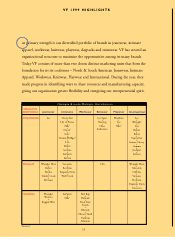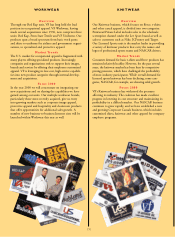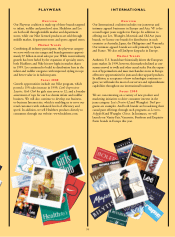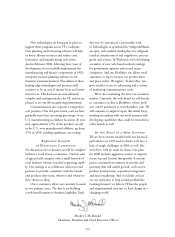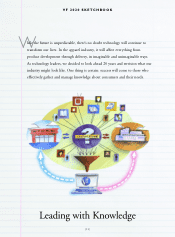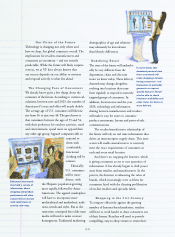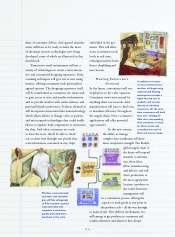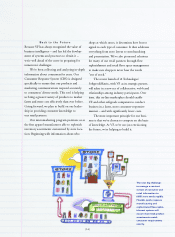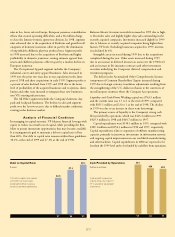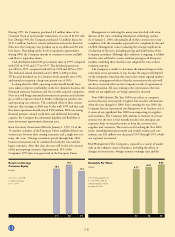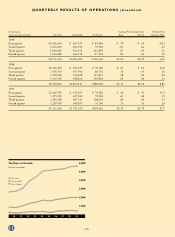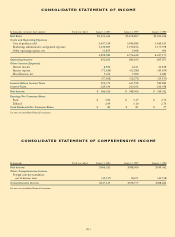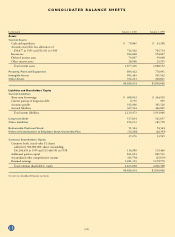North Face 1999 Annual Report Download - page 14
Download and view the complete annual report
Please find page 14 of the 1999 North Face annual report below. You can navigate through the pages in the report by either clicking on the pages listed below, or by using the keyword search tool below to find specific information within the annual report.
[12]
Our Vision of the Future
Technology is changing not only where and
how we shop, but global commerce overall. The
implications for retailers, manufacturers and
consumers are enormous – and not entirely
predictable. While the future will likely surprise
even us, we at VF have always known that
our success depends on our ability to envision
and respond actively to what lies ahead.
The Changing Face of Consumers
We already know quite a few things about the
consumer of the future. According to current cal-
culations, between now and 2025, the number of
Americans 65 years and older will nearly double.
The average age of U.S. consumers will likewise
rise from 36 to just over 40. The good news is
that consumers between the ages of 35 and 54,
with their preference for outdoor activities, travel
and entertainment, spend more on apparel than
any other age group. Apparel companies able to
respond to
them with
comfortable,
functional
clothing will be
winners.
Ethnically,
U.S. consumers
will be more
diverse, with
the Hispanic population growing
most rapidly, followed by Asian-
Americans. The apparel marketplace
will have to incorporate more
multicultural and multiethnic tradi-
tions, trends and styles. But at the
same time, centripetal forces like mass
media will tend to make us more
homogenous. Traditional marketing
demographics of age and ethnicity
may ultimately be less relevant
than lifestyle differences.
Redefining Retail
The store of the future will undoubt-
edly be very different from the
department, chain and discount
stores we know today. These delivery
channels may change altogether,
evolving into locations that trans-
form regularly to respond to narrowly
targeted groups of consumers. In
addition, between now and the year
2020, technology and information
sharing between manufacturers and retailers
will make it easy for stores to customize
product assortments, layouts and point-of-sale
communications.
The retailer/manufacturer relationship of
the future will rely on real time information that
drives an interenterprise supply chain. This inter-
action will enable manufacturers to routinely
meet the exact requirements of consumers in
each and every retail location.
And there’s no stopping the Internet, which
is giving consumers access to vast quantities of
information. It has already begun to shift power
away from retailers and manufacturers. In the
process, the Internet is enhancing the value of
brands, which increasingly serve as filters for
consumers faced with the dizzying proliferation
of on-line retailers and specialty labels.
Shopping in the 21st Century
To compete effectively against the growing
number of Internet-based marketers, retailers
will have to work harder to draw consumers out
of their homes. Retailers will need to provide
compelling, easy-to-shop venues to retain their
In-store kiosks that
download personal data
from smartcards will
make shopping a breeze,
letting consumers “see”
themselves in particular
garments or request
specific features.They’ll
also be able to check
inventory availability and
order items for home or
store delivery.
Enhanced smartcards
that hold a variety of
information about
shopping and product
preferences will allow
consumers to interact
with retail stores in
entirely new ways.




